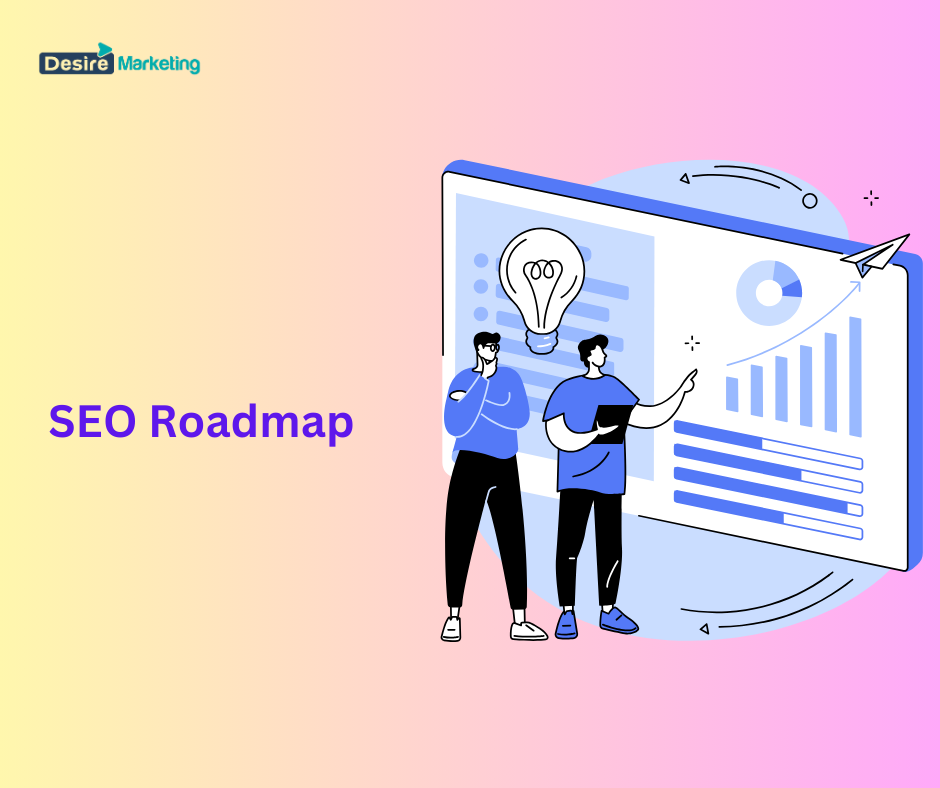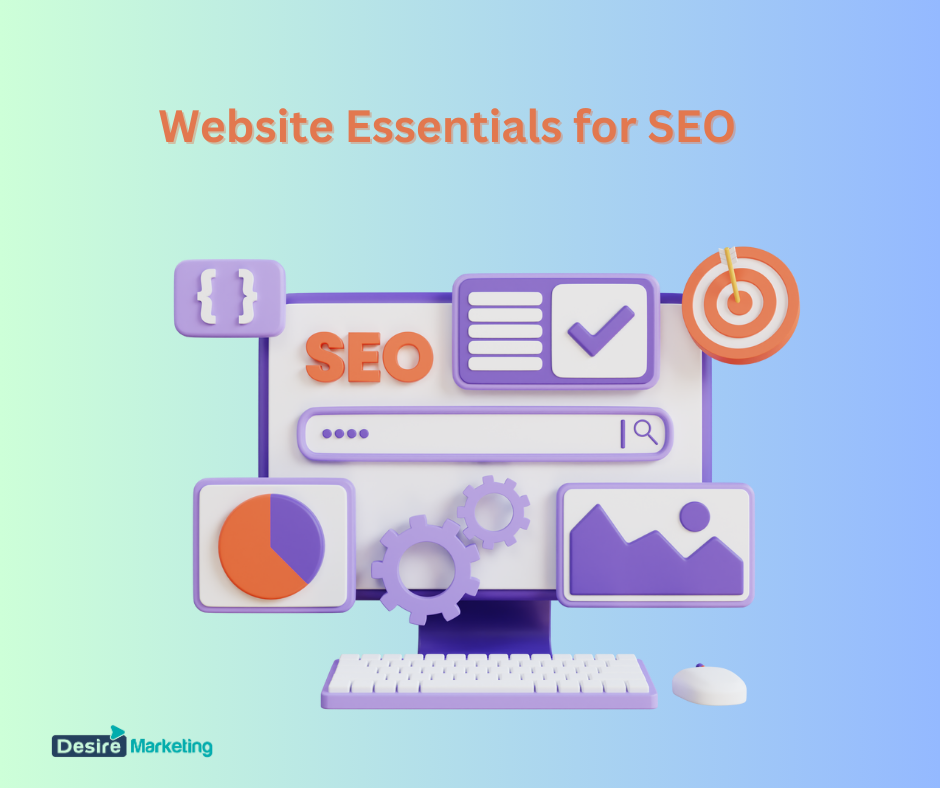An SEO roadmap is one of the most important strategic documents an online marketing team can have. This plan lays out all the critical tasks, priorities, and timelines required to improve search visibility and traffic over time.
Having a clear roadmap ensures continuity on projects, especially when facing staff turnover. It also provides guidance on the best ways to scale campaigns to the next level.
In this comprehensive guide, you’ll learn what an SEO roadmap is, the key elements every effective roadmap should have, and how to build for your business needs.

What Is SEO Roadmap?
An SEO roadmap is a strategic planning document that lays out the objectives, major activities, schedules, and milestones required to meet specific search engine optimization goals over a set timeframe, usually 12-18 months. In this context, using a strategic planning facilitator plays a key role in keeping everything on track.
Here are some of the benefits of creating an SEO roadmap:
- Communicates the overall SEO strategy – Roadmaps give all stakeholders a bird’s eye view of the tactical plans to execute on major goals. This ensures alignment across teams.
- Provides a planning framework – Every task on the roadmap is tied to a goal, so you know what needs to get done by specific dates to move metrics.
- Enables campaign transparency – With a roadmap, clients and managers can clearly see the underlying methodology behind SEO activities.
- Allows for scalability – The phased approach of roadmaps makes it easy to identify growth areas to scale campaigns up (or down) efficiently.
- Supports consistency despite turnover – If key staff leave, the roadmap ensures strategy continuity since all activities are documented.
Key Elements of an SEO Roadmap
For an SEO roadmap to be an effective strategic tool, it needs to contain certain elements that facilitate planning and execution.
1. Phased Approach
Having clear phases is vital for organizing all SEO activities and benchmarks into logical sequences that build upon each other toward the end goals.
Common high-level digital marketing phases include:
- Research & Analysis Phase – The starting point focuses on auditing the website, identifying keyword gaps, examining link profiles, categorizing topics and assessing competitor landscape.
- Technical Optimization Phase – With research insights in hand, this phase tackles vital on-page optimization like site architecture, page speed, mobile responsiveness, metadata, content freshness and more.
- Content Strategy Phase – Now the effort turns to content by mapping out calendars, topics clusters, supporting keywords and content types (blogs, videos etc) that align to phase 1 research.
- Link Building & Outreach Phase – External optimization ramps up through blogger outreach, guest posting, digital PR and proven link building tactics.
- Conversion Optimization Phase – With rankings improving, attention goes to boosting on-site conversions through UX optimization, A/B testing and funnel optimization.
- Analysis & Expansion Phase – In the final phase, analytics are reviewed across all goals to determine new expansion areas for the next roadmap.
2. Defined Timelines
Every single task and milestone on the roadmap needs to have a specific duration or target completion date associated with it.
For example:
- Conduct keyword research – Target End Date – Jan 15th
- Refresh blog content schedule – 3 weeks duration
- Outreach for backlinks – Ongoing
Defined timeframes create much needed accountability when working through roadmaps with extended time horizons. They also facilitate better future resource planning.
3. Assign Owners
Documenting task owners is crucial on roadmaps to prevent any confusion on who is responsible for executing specific items.
Owners can be assigned at various levels:
- Individual (John K. Handles technical audits)
- Teams (Content Team owns blog schedule)
- Agencies/Vendors (Agency XYZ owns link building)
4. Success Metrics
The roadmap must detail metrics that will benchmark progress against each major goal or phase. These will depend on the project but can include:
- Organic traffic
- Rankings for target keywords
- Domain Authority or other metrics
- Link growth velocity
- On-site conversions
Quantifiable metrics turn vague goals into measurable objectives to evaluate campaign success.
5. Visual Timeline
While all the elements above can be logged in spreadsheet format, SEO roadmaps lend themselves very well to visual diagram timelines.
Seeing key phases laid out visually improves communication significantly with stakeholders who may not need granular details. It provides the critical bird’s eye view.
Website Essentials for SEO

Before diving into detailed strategies and campaigns, the first phase of any SEO roadmap focuses on vital website essentials.
These are basic on-page elements that must be in place for long term rankings success.
Some website essential SEO tasks include:
Verify Website on Google Search Console
This free platform is crucial for tracking website performance in Google. It provides data for rankings, impressions, clicks, traffic sources and more.
Verification also enables access to submit sitemaps, fetch updated content and evaluate indexing issues.
Install Google Analytics
Analytics provides the data canvas to track on-site engagement, conversion funnels and customize reports. Installing the platform early allows historical data tracking.
Configure Robots.txt File
This simple text file gives instructions about what parts of the site can or cannot be crawled and indexed by search engine robots.
It can help prevent duplicate content issues or over indexing of insignificant pages.
Create and Submit XML Sitemaps
Sitemaps outline all the important pages search engines should be aware of and prioritize for crawling which improves indexing.
XML sitemaps can be created easily and submitted in Google Search Console for maximum discoverability.
Conduct Technical SEO Audit
Auditing identifies website issues that could be blocking search visibility like site errors, broken links, page speed and more.
Technical problems get flagged early for correction.
Technical SEO Best Practices
Once the website basics are covered, the next phase involves conducting more in-depth technical SEO to enhance on-page optimization.
Some important technical optimization tasks include:
Fix Broken Links and 404 Errors
Broken links or 404 errors not only frustrate site visitors, but they also can negatively impact search rankings if unresolved.
Complete link audits should be performed to identify and fix or redirect any broken links.
Improve Site Architecture and Internal Linking
How pages are organized and connected together through linking and site architecture directly impacts the user experience.
Optimizing navigation menus, footers links and internal connections between related content keeps visitors engaged.
Optimize Title Tags and Meta Data
Title tags and meta descriptions create the critical first impression that can either attract clicks or bounce searchers.
Condensing topics into compelling snippets that make searchers click is an art and science.
Enhance User Experience
Beyond copy, elements like page speed, visual design, layout, calls to action and more affect the user experience and conversion rates.
Improving UX builds trust and keeps visitors engaged with content rather than quickly bouncing.
Fix Crawl Errors and Blocked Resources
Sometimes site resources like images, scripts or pages can get blocked from being indexed causing crawl errors.
Identifying and resolving these technical problems ensures all content gets discovered.
Content Optimization & Auditing
With technical SEO underway, the roadmap should shift focus to content – the fuel that powers all SEO success.
Content optimization involves defining topics, clusters, and supporting keywords then creating informational content that aligns to both audience needs and SEO goals.
Some key content tasks include:
Perform Content Inventory & Audit
Documenting existing web page content allows you to assess strengths, gaps, outdated posts and optimization needs in terms of topics, authority, and formatting.
An audit identifies the highest potential pages to refresh as well as entirely new content needed.
Define Content Themes & Clusters
Organize target topics and subtopics into themes and clusters that make sense for both visitors and bots. Keep information architecture consistent.
The clusters form the basis for blog categories, videos, link tool pages and other content types.
Develop Target Keyword Lists
Conduct keyword research into topics using data from Google and 3rd-party tools to identify terms with traffic potential to target specifically.
Organize keywords into priority tiers based on goals – whether that’s more organic traffic, conversions, or loyalty engagement.
Optimize Existing Content
Re-optimize existing underperforming content for core keywords and topic-specific terms based on learnings from ongoing analytics.
Measure how refreshed content lifts traffic over time.
Expand Voice & Mobile Search Visibility
Modify on-page content for voice readability and featured snippets opportunities on topics. Voice and mobile keep growing as formats.

Having spoken word and quick answer content improves odds of ranking in those SERP features.
Link Building Strategies
Link building refers to the process of acquiring reputable external sites to link back to your website pages. High-quality links remain one of the foremost ranking factors.
Some proven link building tactics include:
Blogger Outreach
Manually identifying and contacting industry bloggers, influencers and resources to see if they would be interested in featuring, mentioning or linking to certain content.
Contributor Guest Posts
Creating and promoting guest posts on niche or industry-relevant external blogs that allow contributor content gains new links pointing back.
Digital PR
Pitching website content, initiatives or company news through press releases and digital PR wires also can attract media coverage linking inbound.
Syndicated Article Content
Repurposing evergreen informational content across publisher network sites which embed author backlinks.
Niche Edits
Volunteering topic expertise by editing and fortifying Wikipedia pages around relevant subjects grants a profile link as community credit.
Let’s examine local search optimization next which is vital for location-based businesses.
Optimizing for Local SEO
For businesses trying to rank for local area searches and traffic, optimizing for local SEO is mandatory. This focuses on improving visibility in the Local Pack and Maps sections.
Some key local SEO tasks include:
Complete Google My Business Listing
Creating a complete Google My Business profile with images, descriptions, accurate business information and even virtual tours helps rankings tremendously.
Encourage Customer Reviews
Generate more local customer reviews on the GMB listing and other sites like Facebook and Yelp. These boost local authority and click-throughs. If your business runs in different locations, you must add multiple locations on Google My Business.
On-page Local Signals
Ensuring consistent use of business name, exact address and contact info across the website strengthens local relevance signals.
Local Link Building
Getting listed as a business resource in local news sites, business associations, events calendars and niche directories connects more locale-specific signals.
Measure Pack Rankings
Tracking Search Console data on impressions and clicks from the Local Pack confirms if visibility is increasing in local results.
Tracking & Benchmarking SEO Results
The final phase of any SEO roadmap focuses on measurement and expansion planning.
Setting measurable goals then analyzing performance across key benchmarks determines what’s working and where more effort is needed.
Some key SEO analytics activities include:
Rank Tracking for Target Keywords
Recording rankings weekly for core terms provides quantitative data on how visibility is trending in organic results.
Ranking tools automate this for serps beyond just Google like Bing and Youtube.
Traffic Volume Analysis
Compare traffic levels month-to-month and year-over-year to confirm overall volumes are expanding as planned.
Break this down by source/mediums too like organic search, referral, direct etc.
Goal Conversion Analysis
Evaluate whether the number of conversions for defined goals is increasing over the roadmap timeline.
Goals can include email sign-ups, content downloads, purchases and more.
Backlink Profile Audit
Use link analysis tools to determine if domain/page authority metrics are rising through link building efforts.
Evaluate which tactics are delivering the best links for scalability.
Develop Future Roadmap
With a snapshot of performance across metrics and marketing levers, the next iteration roadmap takes shape focusing on high-potential areas for continued gains.
The process comes full circle enabled by consistent tracking and analysis.
Conclusion
In the vast landscape of search engine optimization with its ever-evolving best practices, SEO roadmaps enable digital marketing teams to set clear directions.
Defining phased success milestones, assigning tactical tasks, documenting timeframes and designating owners transforms high-level strategies into executable reality.
With all activities mapped out, campaigns stay consistent even when facing staff turnover. Consistent tracking of rankings, traffic, and conversions keeps effort focused on what delivers results quarter to quarter.
The sequenced step-by-step process provides a framework for scaling campaigns as well once basic optimizations solidify.
While reaching the final destination brings huge accomplishment, the digital marketing journey really never ends. There are always new optimization pathways and opportunities just over the horizon.
That’s why completing that first SEO roadmap just clears the path for crafting the next one armed with more experience and expanded vision.





